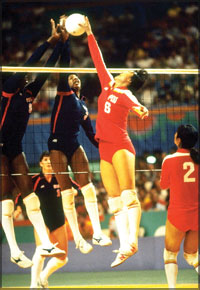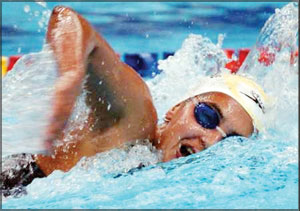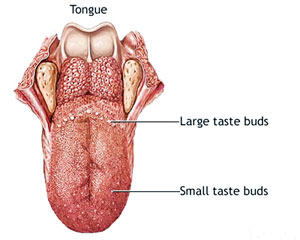Variety
National sports associations of Sri Lanka:
Sri Lanka Volleyball Federation
Twenty one years after its birth in the USA and nearly three decades
before the organisation of the Federation Internationale de Volleyball,
this game was introduced to Ceylon. Ancient poets of Sri Lanka described
young women of the day playing ball games with their hands on balconies,
though this was not known as volleyball.

The game of volleyball was introduced to Sri Lanka, (then Ceylon), in
1916 by R. W. Camack, then Director of Physical Education at the Colombo
YMCA. He demonstrated the game to players who gathered at Price Park
Playground, Pettah. It was led by the late V. A. Sugathadasa who later
became the country's first Sports Minister.
Volleyball became tremendously popular and by 1922 the City of
Colombo alone had 25 volleyball clubs which formed the "City Volleyball
League" organised by Camack himself.
Many enthusiasts at this time thought that one organisation should be
formed to control the game in the country. A group of persons led by R.
Saravanamuthu met at the Colombo YMCA one day in June 1930 and formed
the 'Ceylon Volleyball Association'. The first president of the body was
T. F. Garvin.The first 'All Ceylon Volleyball Competition' was held in
1932 at the Maradana Police Grounds. Nine years later, in 1941, the
six-a-side game was introduced by a separate group of people called
'Ceylon Six-a-side Volleyball Association' headed by Sir James P.
Obeysekera.
In 1951, it was realised that more valuable services to the game
could be rendered if the two controlling bodies are amalgamated (joined)
and a federation formed. As a result, on September 4, 1951, the two
associations joined and the Ceylon Volleyball Federation was formed.
Sir Richard Aluvihare was elected as the President and S. Rajadorai
and P. C. Anandappa were elected Joint Secretaries. In 1955, Sri Lanka
gained membership in the International Volleyball Federation.
On August 14, 1990 Sri Lanka volleyball came of age. A three-member
committee headed by Prof. Vinnie Witharana, appointed by the then Sports
Minister, recommended that volleyball has the historical and logical
background to be declared as the National Game of Sri Lanka.
National Amateur Aquatic Union
 Swimming
is conducted in an organised manner since 1931, with the establishment
of the Sri Lanka Amateur Swimming Association (SLASA). Swimming
is conducted in an organised manner since 1931, with the establishment
of the Sri Lanka Amateur Swimming Association (SLASA).
All swimming events including the two-mile annual swim in Mt. Lavinia
were conducted under the guidance of the Sri Lanka Amateur Swimming
Association until 1975. The Mt. Lavinia competition is considered as one
of the oldest annual swimming events in the world.
In 1975, the National Amateur Aquatic and Swimming Union (NAASU)
preceded the SLASA and engulfed diving, water polo, synchronised
swimming too under its wing. Records show that NAASU, now called Sri
Lanka Aquatic Union since 2003, got its registration with the Sports
Ministry on March 22, 1973 and the registration with the international
body in 1975.Sri Lanka's first ever international swimming competition
representation was in 1958 at the Tokyo Asian Games. It continued to
field swimmers at nine Asiads following the Tokyo Games.
In 1958, Sri Lanka made her debut at the Cardiff, Wales Commonwealth
games and then in Kingston (1966) and in Victoria (1994).
- Senior sports writer
Leslie Fernando
Getting the full flavour
 We
all love to eat delicious food, but do you think we would understand the
different tastes of different food if we didn't have taste buds on our
tongue? We
all love to eat delicious food, but do you think we would understand the
different tastes of different food if we didn't have taste buds on our
tongue?
For those of you who don't know what taste buds are, they are what
help you taste all the food you eat.
You may have seen the small pink bumps on your tongue. These are
known as papillae and the taste buds are found inside most of these.
Special cells called receptor cells combine to make up these taste
buds. These receptor cells carry the signals about taste to our nerves
and the nerves take this information to our brains. This is how we can
figure out the taste of the food we eat. All different tastes can be
felt by taste buds found anywhere in the mouth, although there may be
certain areas of the tongue which may be more sensitive than others.
More than 10,000 taste buds are found in the human mouth. You may not
know this, but the tongue is not the only place where you have taste
buds; they are also found in the roof of the mouth, in the cheeks and
throat.
If you thought that's rather unusual, here's something even more
unusual. Some fish have taste buds located outside their bodies, while
some insects have taste buds on their feet.Despite having taste buds, we
still won't be able to get the full flavour of anything if we couldn't
smell it. Taste, smell and texture all combine to bring out the full
flavour of any dish.
Snippets:
What are the Middle Ages and Dark Ages?
You may have often come across these terms in books or heard people
talk of such periods of time that existed in the past.
Generally, what is referred to as the Middle Ages is the period from
the break-up of the Roman Empire to the rise of modern European nations.
It is also known as the medieval period. It is the first half of the
Middle Ages (AD 500-1000) that is called the Dark Ages because culture
and learning almost disappeared from Europe during this time.
******
What ancient temple was used as a
gunpowder store?
The beautiful and renowned building, the Parthenon on the Acropolis
in Athens was used as a powder magazine by the Turks, who were engaged
in fighting the Venetians in 1687. This building which was almost
undamaged for more than 2,000 years, was seriously damaged when a chance
shell fell on the gunpowder. Portions of the sculptured frieze(sculpture)
were acquired by Lord Elgin in 1801-1803. Some years later they were
bought from him by the British Government and placed in the British
Museum, where they are known as the Elgin marbles. We can only know the
exquisite beauty of the temple in the drawings depicting the Parthenon
before its destruction in 1687, made by James Stuart (1713-1788) and
Nicholas Revette (1720-1804).
******
How does ice differ from snow?
Ice is water in bulk frozen into a solid mass while snow is water
vapour condensed at a lower temperature than 32 degrees Fahrenheit and
therefore passing straight from a gaseous to a solid form.Ice
crystallises in six-sided crystals with angles of 60 degrees and 120
degrees and snow into an exquisite variety of patterns, all deriving
from the six-sided star. These crystals normally combine to form
snowflakes. |


